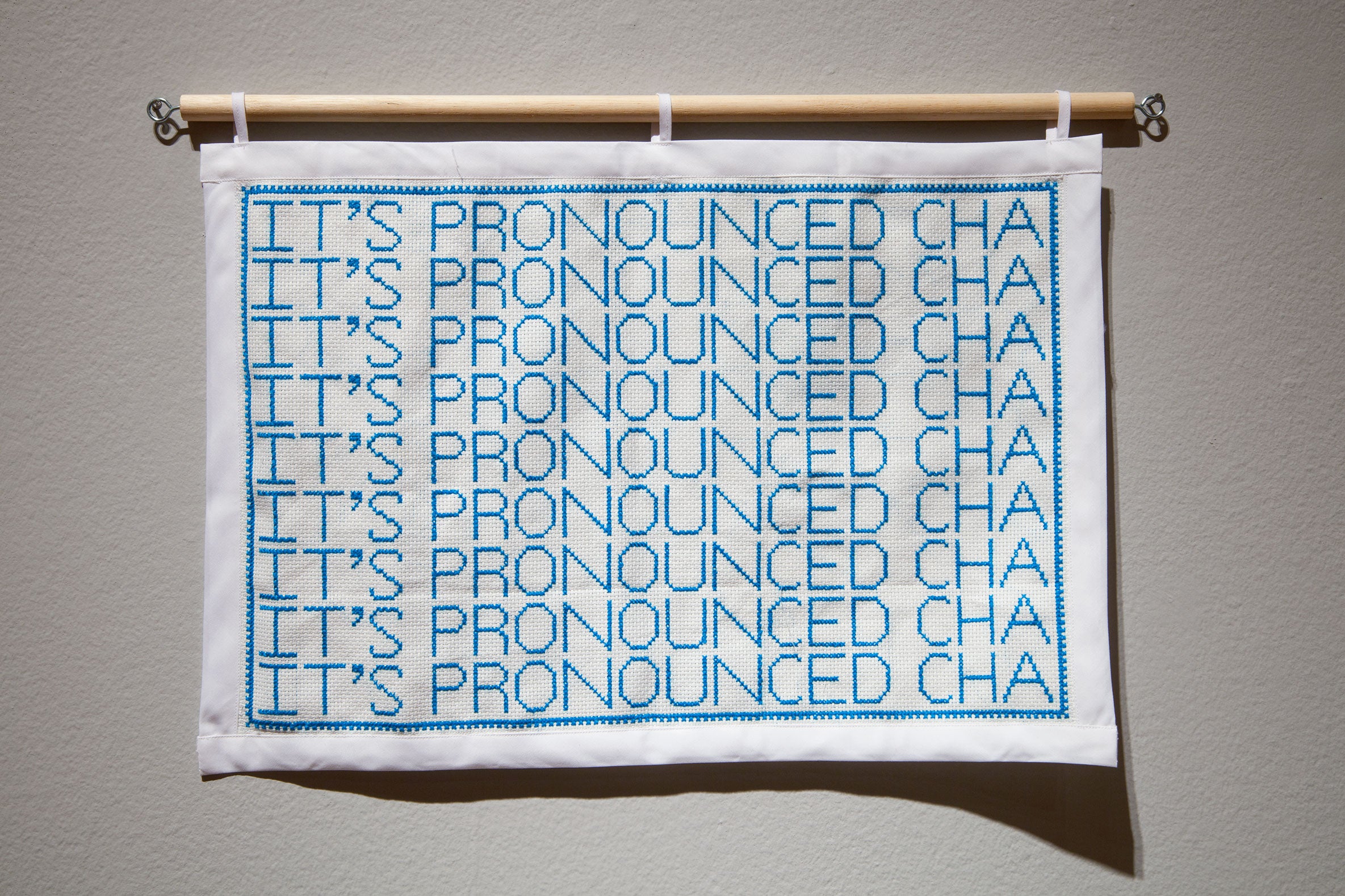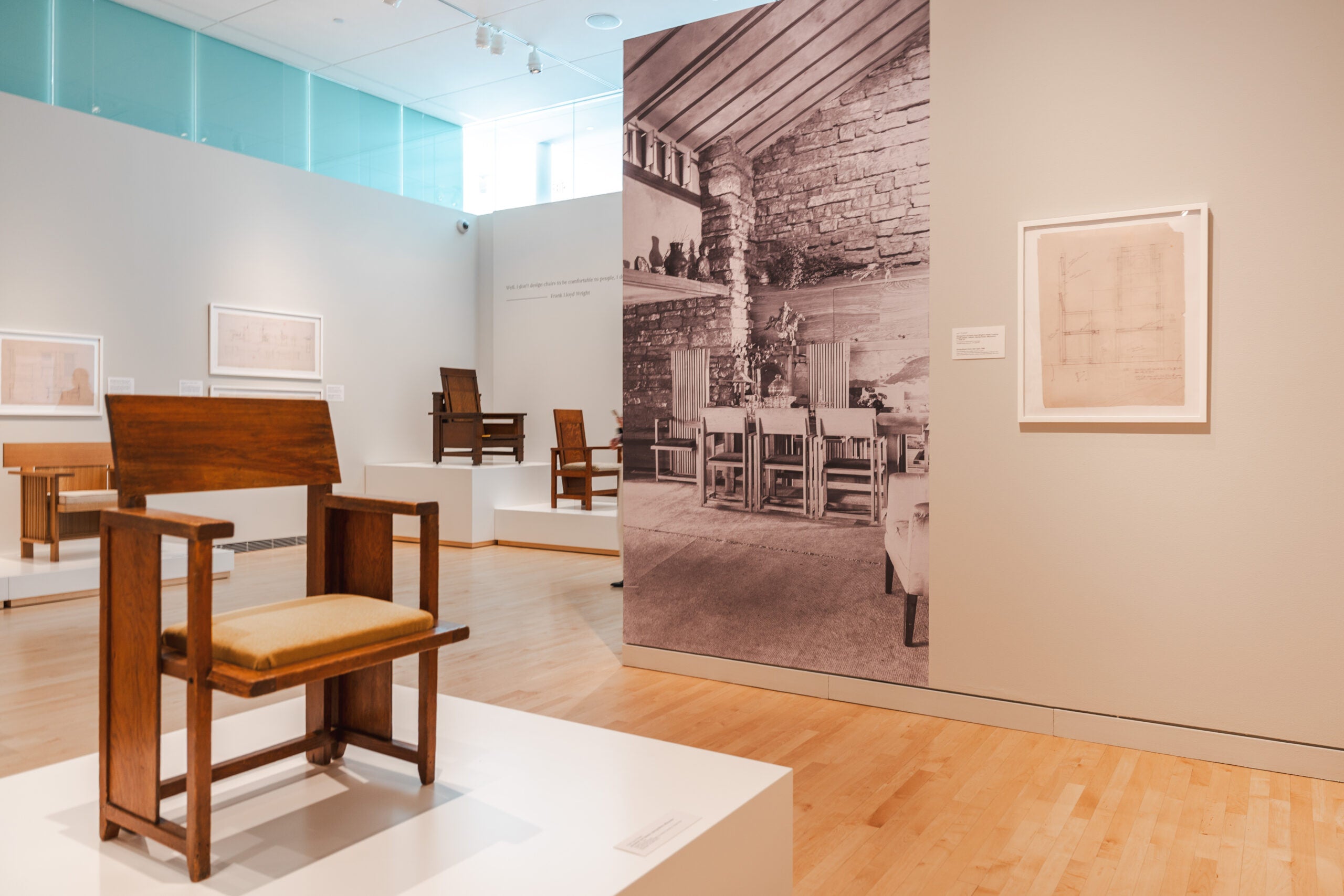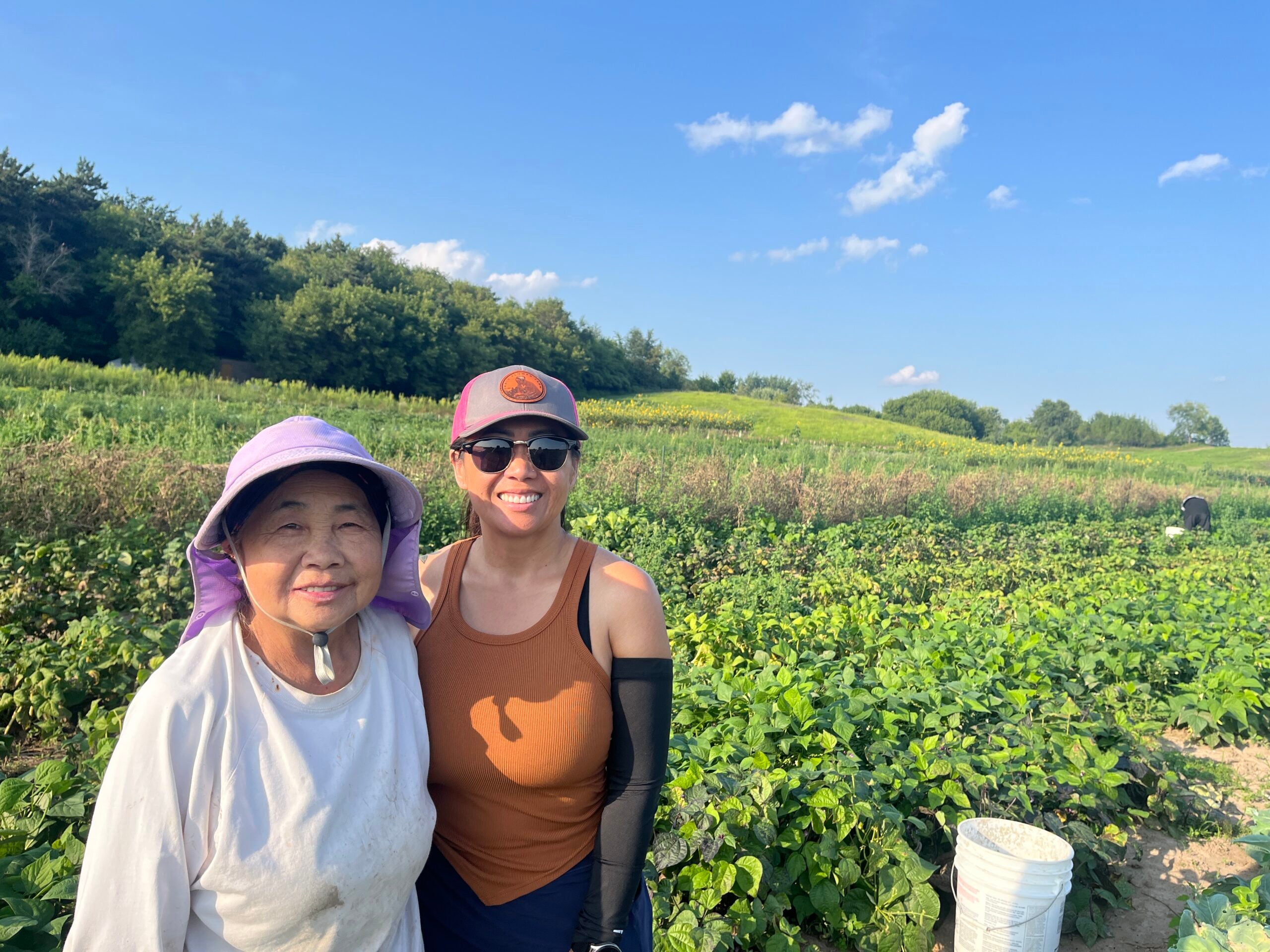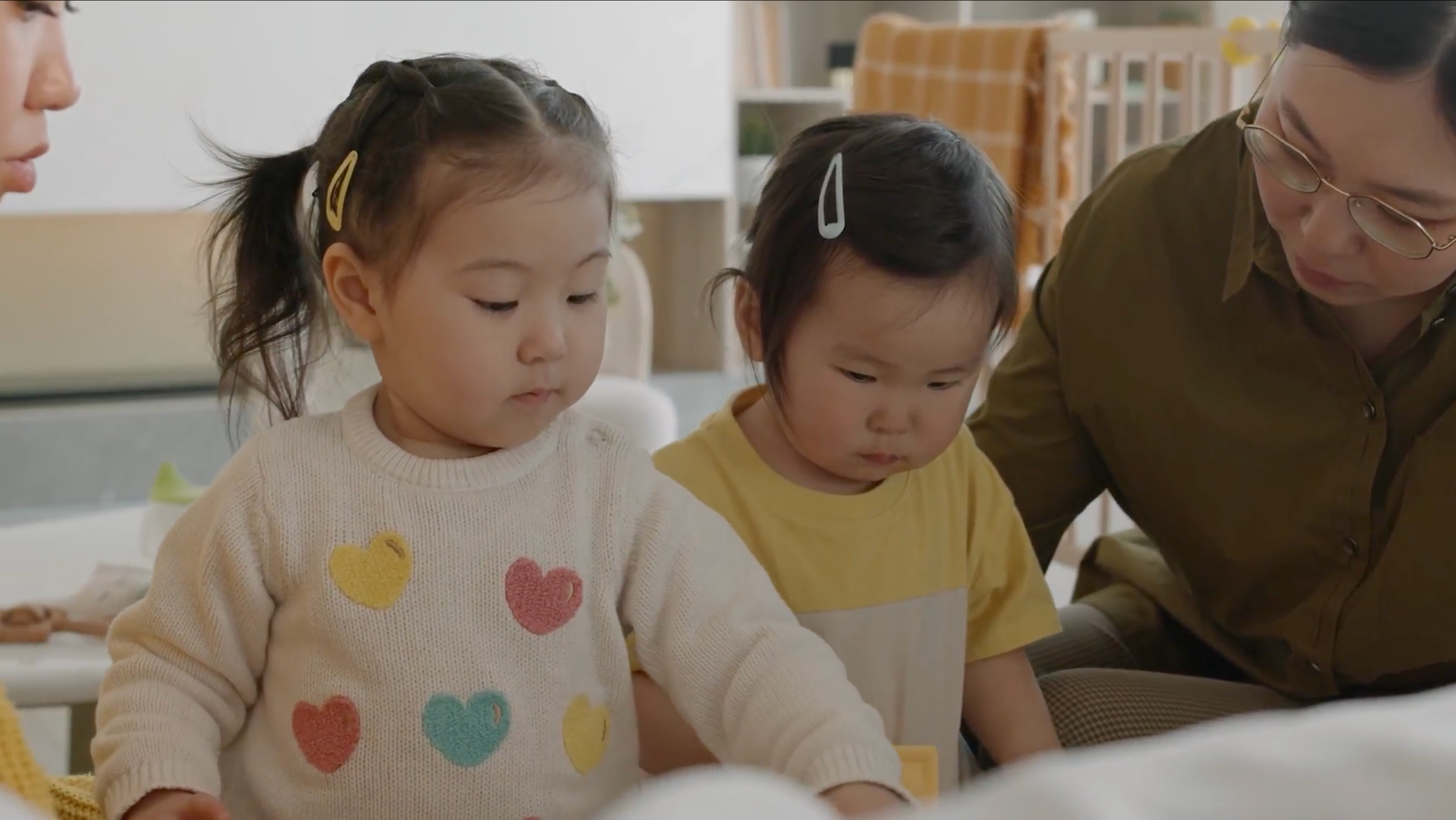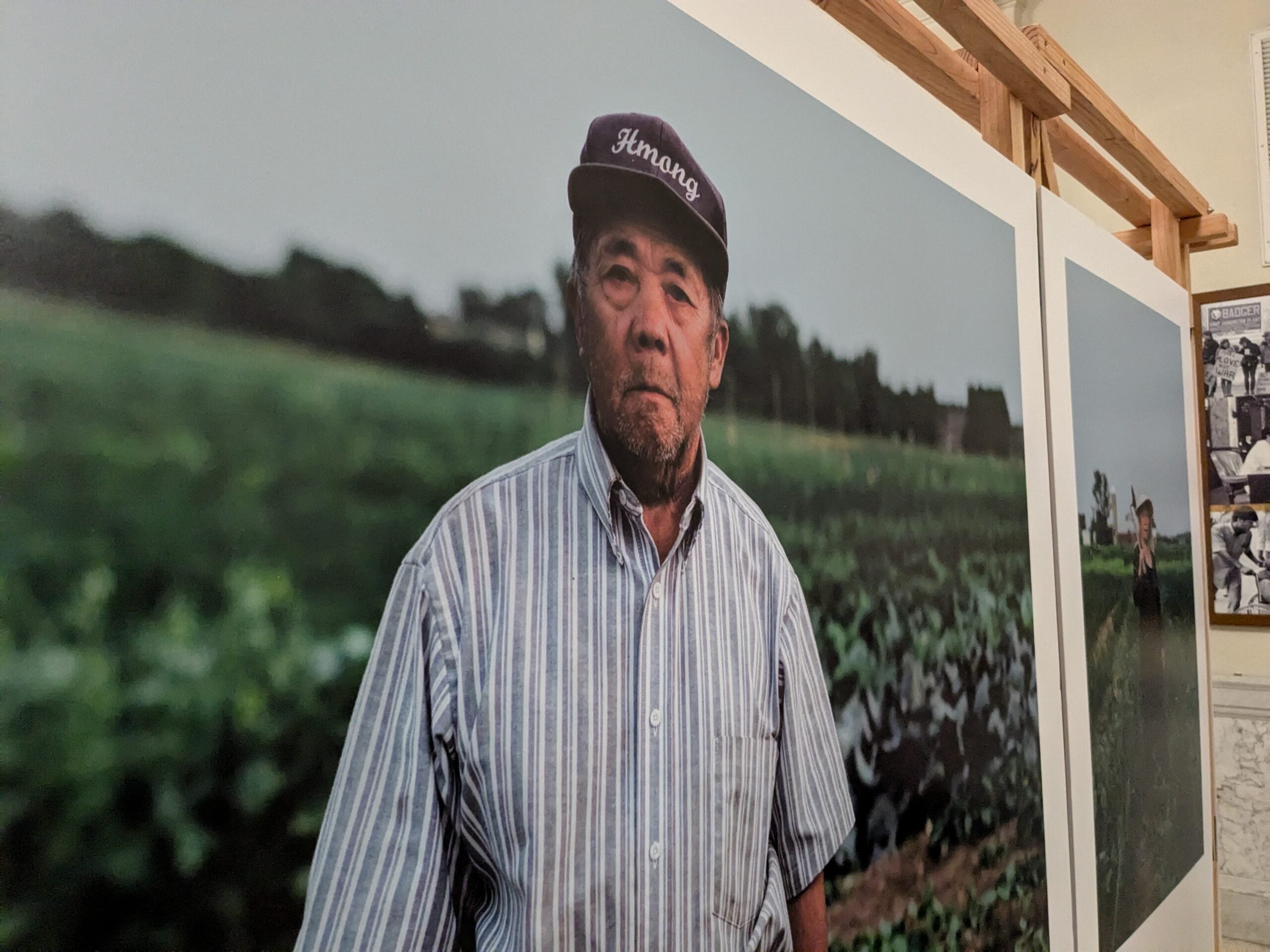Jennifer Tshab Her prefers to be called by her middle name. But few people know how to pronounce it and those who don’t, always ask her about it. So, she responded as an artist would, with embroidered floss on aida cloth reading out the words she’s so often said: “It’s Pronounced Cha,” repeated nine times.
“I’m always repeating myself, over and over again, trying to make space for my own name, which also coincides with how my other work talks about my Hmong identity and how we as the Hmong people aren’t as known throughout the U.S.,” she said.
Her is a Hmong-American artist based in Chicago whose preferred art forms are embroidery and cross-stitch. Her work, including “It’s Pronounced Cha,” is on display at Appleton’s Lawrence University in the Kohler Gallery.
News with a little more humanity
WPR’s “Wisconsin Today” newsletter keeps you connected to the state you love without feeling overwhelmed. No paywall. No agenda. No corporate filter.
The exhibit, called “thaum koj tshwm sim / when you were made,” opened Jan. 11 and runs through March 8.

Jennifer Tshab Her said she prefers to be called by her middle name, which often garners comments and questions about how to pronounce it . Photo courtesy of Tshab Her.
Reflecting the tug-of-war between her two cultures, Hmong-American artist Victoria Kue explained how some of her work has humorously meditated on the difficulties Asian-American women face when dating.
In a series titled, “hello, goodbye?” Kue paints a portrait of a conversation that she had with a man she met on a dating application. Chinese letters are punctuated with a question mark. Kue responds in English, “Am I supposed to understand that?”
The two-tone painting that looks like an iPhone’s text message display, imitates his actual response. “Yes are you a beautiful Chinese girl?”
The series is a take on sexism and racism, said Kue, who is based in Lancaster, Pennsylvania, and works in ceramics, sculpture and installations.
“I expressed feelings of being disposable,” she said. “I also expressed feelings of inadequacy and then I also addressed racism, sexism, gender roles.”
In addition to the art exhibit, several events expounding on Hmong culture will be held around the Fox Valley, such as a Tween Scene Workshop with Her on Tuesday at 4 p.m. at the Appleton Public Library, and a film screening of “Being Hmong Means Being Free” at Lawrence University on Feb. 21 at 6 p.m.
The Fox Valley is home to about 4,700 Hmong-American residents, part of the state’s population of about 49,000, according to the most recent census. Wisconsin is the third most populated Hmong-American center behind California and Minnesota.
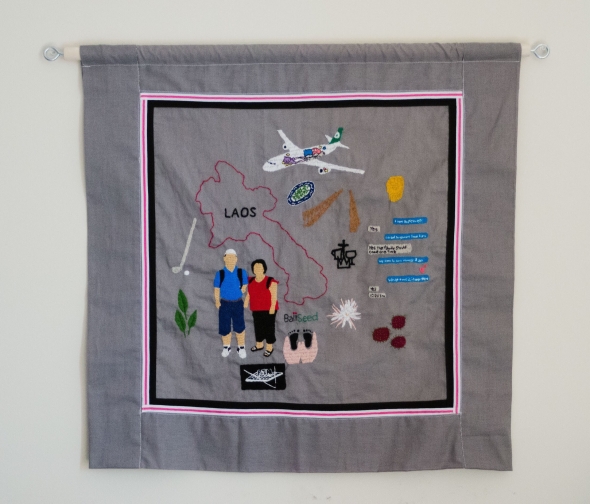
“Returning” is embroidery floss on cotton fabric created by Tshab Her to show her family’s journey back to Laos. Photo courtesy of Tshab Her
Hmong people came to the U.S., seeking asylum as political refugees after the communist takeover in Vietnam and Laos in 1975. While in refugee camps, Hmong women began to sew story cloths depicting their migration to Thailand from Laos as a way to earn money.
Her uses this method in one of her pieces, this time depicting her parents’ return to Laos from the U.S.
“(I used) contemporary things like text messages from my parents while they were over there and the airplane,” she said.
“Reclaiming Existence” is another one of Her’s pieces and features a pattern she created from something her grandmother had sewn. In the exhibit, the pattern is printed on vinyl across walls and on the floor.
“It alludes to making spaces for Hmong people, and how we don’t have our own country,” she said. “I was trying to mark spaces with this Hmong pattern, making it look like this is us. We belong somewhere.”
Wisconsin Public Radio, © Copyright 2026, Board of Regents of the University of Wisconsin System and Wisconsin Educational Communications Board.
